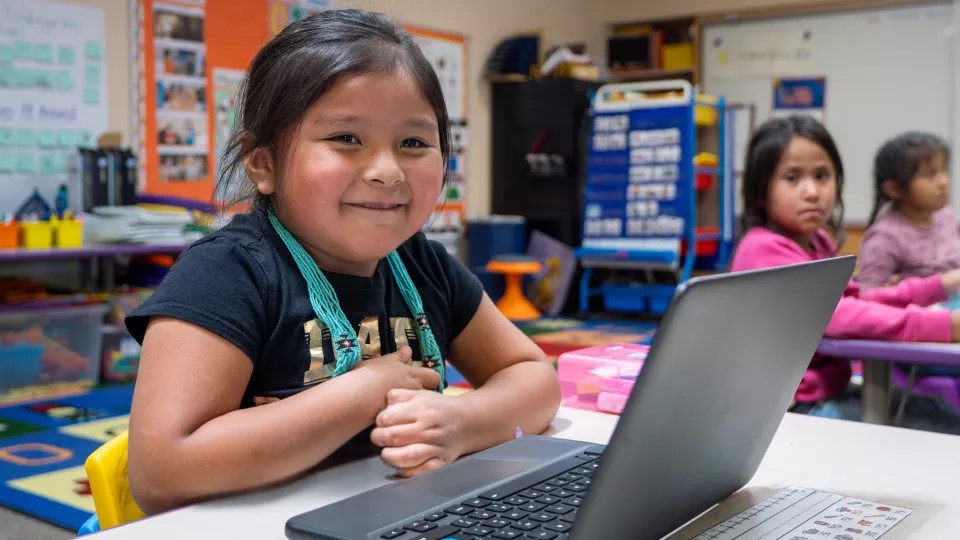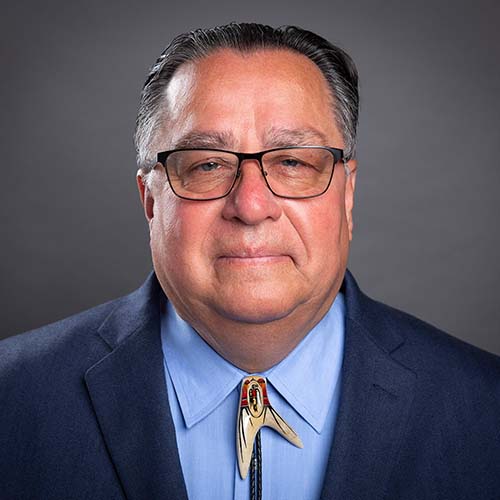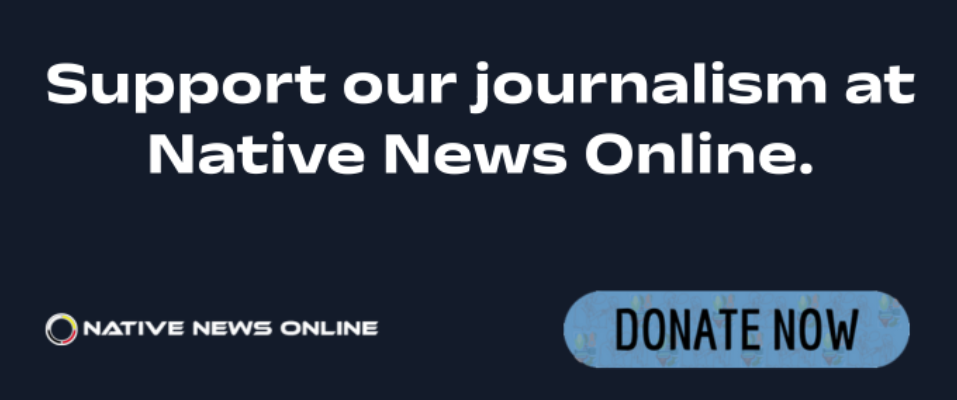
- Details
- By Aaron Payment, Ed.D.
Guest Opinion. During Native American Heritage Month, and just ahead of Thanksgiving, U.S. Secretary of Education Linda McMahon announced on Nov. 18 that “the Trump administration is taking bold action to break up the federal education bureaucracy and return education to the states.” On the surface, this may have some appeal, especially given that the U.S. education system was originally designed to allow local control. But in the not-so-distant past, “local control” meant a lack of opportunity—and, often, outright discrimination—against people of color like me. I was a public-school failure who dropped out at 15. With 12 graduate-level letters behind my name—and another three for my GED—I’m proof our people can accomplish anything when afforded educational opportunity.
While some would like to believe we have moved beyond racism, Ruby Bridges—the little girl escorted into a desegregated New Orleans school in 1960—is only 71 today. And while we have seen progress since the 1928 Meriam Report and the 1969 Kennedy Report exposed the dismal education of American Indian and Alaska Native students, the disparities remain painfully persistent. More than 50 years ago, the Kennedy Report found Native “dropout rates twice the national average.” Sadly, the 2018 U.S. Commission on Civil Rights’ “Broken Promises” report shows that the same proportional disparity remains for Native young men and women today. Doing the same thing and expecting different results is insanity.
Ninety-three percent of Native students attend public schools. Only seven percent attend Bureau of Indian Education or Tribal Grant Schools. While I do not support ending public education, tribal nations must consider that we have waited long enough for systems outside our control to succeed. That is why I served for several years as president of the Joseph K. Lumsden Bahweting Anishinabe Charter School. Fresh out of graduate school in 1991, I helped conduct my tribe’s environmental scan to determine whether our people wanted our own education system. The response was overwhelming—80 percent said yes. We opened our tribally determined school in 1995 with no federal construction assistance. Just one year later, a federal moratorium stopped the creation of new tribal schools. That moratorium still exists.
Today, our school serves more than half of all school-age tribal youth in our community. We are working to expand to a high school—part of our original plan. While we appreciate improvements in the local public schools, graduation rates for our students remain disproportionately low compared with their white peers. I know we can do better. I hope this proposed transfer of Indian education functions from the Department of Education (DOE) to the Department of the Interior (DOI) will bring new funding opportunities for tribally controlled schools. As first vice president of the National Congress of American Indians in 2017, I was proud to support the publication of the Tribal Leaders’ Indian Education Schools of Choice Toolkit.
U.S. Interior Secretary Doug Burgum says the shift will strengthen Native education programs and make them “more accountable” and “fully dedicated to ensuring Native students are prepared for success.” He said the DOI will “assume administration for enhancing Indian education programs, streamlining operations, and refocusing our efforts to better serve Native youth and adults.” I appreciate that this includes adult learning. As a high school dropout, I know the importance of credit recovery, GED programs and opportunities for second chances. Tribal Colleges and Universities (TCUs) play a critical role in this pathway. My dissertation research found that students who enter higher education with a GED are just as likely to graduate with GPAs just as high as traditional entrants. Those who begin at TCUs and later transfer are also just as likely to graduate. Higher education at a TCU is often less than one-third the cost, and TCUs provide culturally oriented environments more conducive to AIAN student success. I also served as a board of regent for a TCU in my Tribe’s territory, and I have seen firsthand how vital they are.
The proposal to divest Indian education functions from DOE will be executed through interagency agreements. The authority remains with DOE, but DOI will take the lead. The programs slated to move include Indian Education Title VI but not Impact Aid—funding I believe should also be transferred. Impact Aid for Indian Country is critical and tied directly to the federal trust responsibility. A dedicated position overseeing Indian education is warranted and justified under Article I, Section 8, Clause 3 of the Constitution, which empowers Congress to regulate commerce with Indian Tribes, and under the treaty and trust obligation prepaid with nearly 2 billion acres of ceded tribal territory. Click here to see impacted programs.

My recommendation is to elevate the current Bureau of Indian Education director to an assistant secretary of Indian education or conduct a national search. President George W. Bush previously created an assistant secretary for Indian education under the education secretary—based on recommendations from the National Advisory Council on Indian Education—but the position was never filled. That must not happen again. The director of the Office of Indian Education must also be maintained given the substantial workload. This recommendation has long been endorsed by Native organizations—not as an act of diversity, equity and inclusion, but to honor treaty obligations.
“Not for us, without us.” Yet the decision to transfer these functions was made without tribal consultation, violating Executive Order 13175 and decades of presidential directives. This is a major misstep in diplomacy and substance. Under the Commerce Clause, tribes are not subordinate to states. Treaties establish a superior right to an education as part of the trust obligation. There is also a moral imperative to undo the trauma inflicted by Indian mission and boarding schools.
A DOE spokesperson has said that as implementation moves forward, the department “will engage with key stakeholders, including tribal leaders.” But “key stakeholders” is a red flag. We are not stakeholders or special interests. We are sovereign nations with a government-to-government relationship with the United States. Only tribal governments, their delegated school boards and districts, can speak on our behalf. We work closely with national Native organizations—such as the National Indian Education Association, American Indians in
Higher Education Consortium, American Indian College Fund, Tribal Education Departments National Assembly, National Congress of American Indians—but consultation must occur directly with tribes. No further action should be taken without formal, robust tribal consultation, including breakout sessions by function and purpose.
Tribes did not ask for this shift, nor were we consulted before it was announced. But here we are. Perhaps this is the paradigm shift we have been waiting for. Tribal Nations have waited long enough for real reform to honor the promise of Indian education made in exchange for 2 billion acres of land. We are not asking for welfare or reparations. We are asking the United States to uphold its side of the bargain.
Native students still have the worst high school graduation rates in the nation. That alone tells us we have not succeeded as a country. We have work to do. And we continue to receive pennies on the dollar for what was promised. If this shift finally brings overdue focus to the 93 percent of Native youth in public schools—and increases federal commitment to Indian education—then perhaps a long overdue turning point is at hand.
Dr. Payment has served in elective tribal office for over 23 years including as Chairperson/CEO and Tribal Council; numerous National Tribal Advisories including the National Advisory Council on Indian Education, ESSA Negotiated Rule Making, HHS Secretary Tribal Advisory, and Tribal Interior Budget Council, has served as 1 st VP (elected twice), Secretary (elected twice) and as Midwest Regional VP of the National Congress of American Indians. Dr. Payment holds a BS, MPA, MEd, EdS, EdD all after having earned his GED. Email: [email protected]
Help us defend tribal sovereignty.
At Native News Online, our mission is rooted in telling the stories that strengthen sovereignty and uplift Indigenous voices — not just at year’s end, but every single day.
Because of your generosity last year, we were able to keep our reporters on the ground in tribal communities, at national gatherings and in the halls of Congress — covering the issues that matter most to Indian Country: sovereignty, culture, education, health and economic opportunity.
That support sustained us through a tough year in 2025. Now, as we look to the year ahead, we need your help right now to ensure warrior journalism remains strong — reporting that defends tribal sovereignty, amplifies Native truth, and holds power accountable.
 The stakes couldn't be higher. Your support keeps Native voices heard, Native stories told and Native sovereignty defended.
The stakes couldn't be higher. Your support keeps Native voices heard, Native stories told and Native sovereignty defended.
Stand with Warrior Journalism today.
Levi Rickert (Potawatomi), Editor & Publisher

